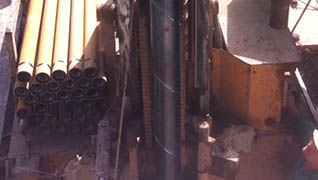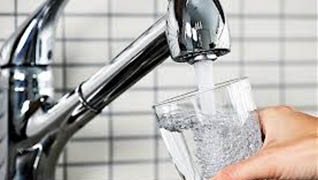Generally we use rotary DTH hammer drilling, using top drive hydraulic rigs with high pressure air flush, and foam injection where necessary. We are able to drill up to 230m in depth through most formations up to 12-inch diameter.
Once the well is proved viable during the drilling process, casing is installed to drilled depth. An "air lift test" will determine the yield of the well, which will allow for the correct pump size to be selected.
We use a draw down and recovery test where the well is pumped for a determined period of time. The volume of water pumped and the water level in the well is monitored every 10 minutes.
Once the pumping has stopped the recovery of the well, or rising water level is also monitored for the same period of time. Using this data and applying certain calculations we can determine the exact capacity of the well.

Steel casing is used in the majority of drilled wells. This is especially selected in unstable formations as it allows the drilling rig to push or drill the casing into the formation where necessary. The casing comes in sections which are welded together as each section is inserted, providing a seamless interior diameter. It is possible to drill into wells cased in steel, to either deepen or clean them.
PVC casing is the least expensive option and is only used in stable formations. The disadvantage is that wells cannot be cleaned out or drilled deeper, if ever required, if cased in PVC.
In both cases slotted casing is set at the levels where the aquifers have been encountered during the drilling process.

Well pump control boxes are developing constantly and digital control boxes are being used more often. These allow better protection for the motor and elimination of well sensors (which prevent dry run situations).
Well sensors can be particularly unreliable in hard or aggressive water and put the pump at risk by not detecting low water levels or by the well being inactive as the sensors wrongly detect a no water situation.

We are able to fit submersible, or suction pumps in existing wells to depths of up to 200m, (suction pumps being limited to wells less than 8m deep), and of cause to pull out any existing pumps, either for repair or replacement. In every case the best quality pumps and materials are selected.

We can take water samples from existing wells; these are then given to a local laboratory for biological and chemical analysis.
Spain: +34 629 978 801 / UK: +44 (0)777 426 3249
info@wellsinspain.co.uk